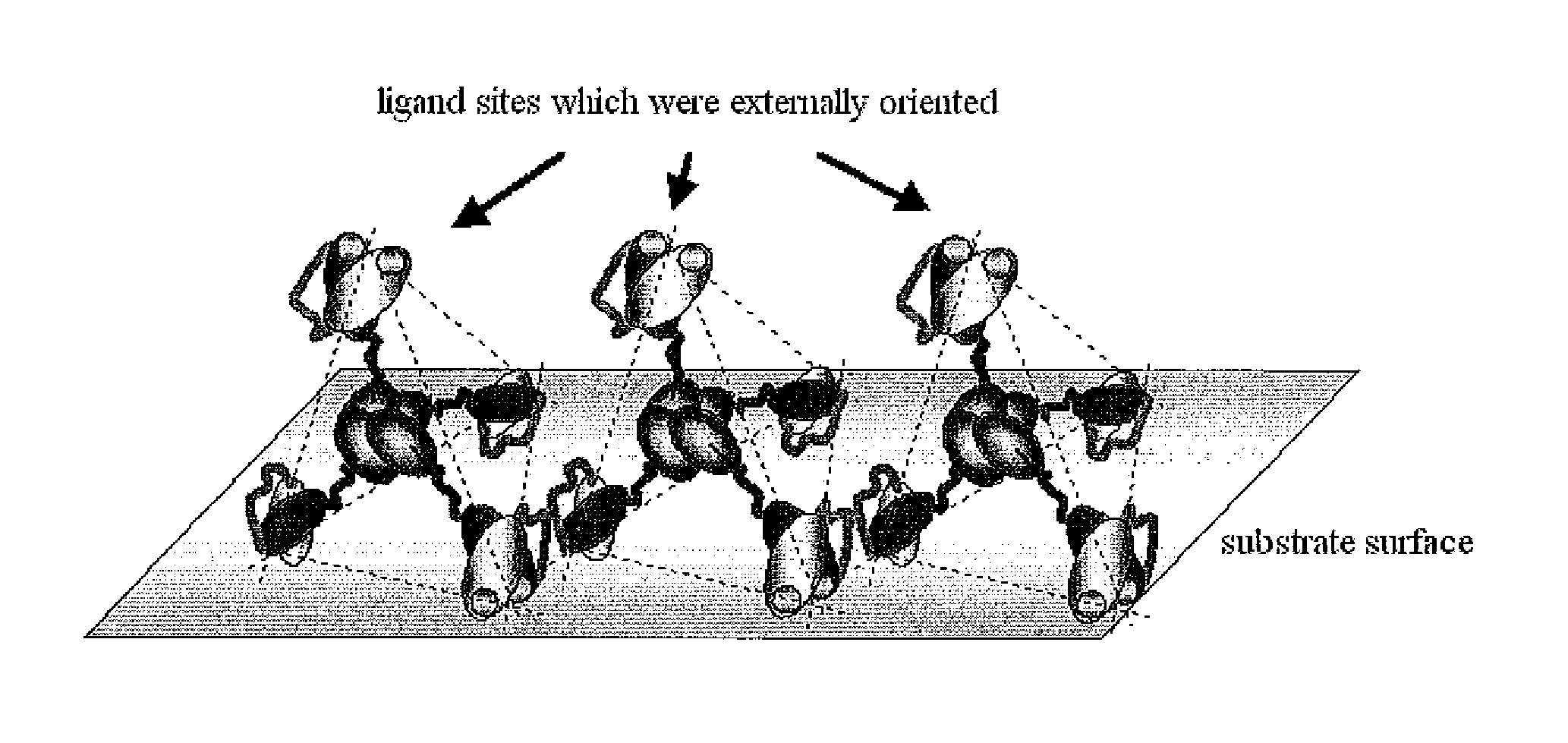Substrate for biological fluid treatment
a biological fluid and substrate technology, can solve the problems of difficult to recognize the target substance in an effective form, no practicable technique which specifically captures the target substance in blood, in particular directly from the whole blood, and cannot be applied in the field of substrate for biological fluid treatment, so as to improve the safety and therapeutic effect, the effect of reducing side effects
- Summary
- Abstract
- Description
- Claims
- Application Information
AI Technical Summary
Benefits of technology
Problems solved by technology
Method used
Image
Examples
example 1
Production of Leu3a scFv-SA
(Production of Leu3a Single-Chain Antibody Gene)
[0075]Regarding the nucleic acid sequence of Leu3a being a mouse anti-human CD4 monoclonal antibody, Genbank Accession No. M97867.1 for the VH region and Genbank Accession No. M61046.1 for the VL region are open to the public. In order to form a single-chain antibody from these sequences, a sequence in which these sequences were linked by a nucleic acid that encodes a 15 amino acid sequence serving as a linker (SEQ ID NO: 1 of the sequence listing) in the order of VL-linker-VH, was designed and prepared by complete synthesis. At that time, an Nco I site was added to include an initiation codon right in front of the VL region, and a Not I site was added to the end of the VH region. These nucleic acids were subcloned into vector pUC57.
[0076]The complete synthesis and subcloning of the above nucleic acid sequence were done by the custom synthesis service provided by GenScript Corp., US. This nucleic acid sequenc...
example 2
Expression, and Recovery Under Denaturation Condition with Guanidine Hydrochloride
[0083]The expression vector that had been constructed in Example 1 was transformed into E coli. BL21 (DE3) strain (NOVAGEN) according to the instruction manual. The strain was cultured in 2×YT medium (1.6% bacto triptone, 1% bacto yeast extract, and 0.5% NaCl) containing 34 μg / ml kanamycin and 1% glycerin at 37° C., and the culture was terminated when the absorbance OD at 600 nm reached 0.7 to 0.8. Glycerin was added at final concentration of 15%, and the mixture was stored as a glycerol stock at −80° C. 1 ml of the stored glycerol stock was mixed with 300 ml of 2×YT medium containing 34 μg / ml kanamycin and 1% glycerin, and was cultured at 37° C. IPTG (TAKARA) was added at final concentration of 1 mM when the absorbance OD at 600 nm reached 0.7 to 0.8. Incubation was then conducted for another 4 hours at 37° C. This E coli. suspension culture was transferred into a 500 ml centrifuge tube, and was subje...
example 3
Refolding and Purification Through Dialysis with Serial Dilution of Urea
[0086]About 30 ml of the Leu3a scFv-SA protein which had been purified and solubilized under denaturation with guanidine hydrochloride likewise of the former part of Example 2, was dialyzed with 1 L of a dialysis external solution for serial dilution of urea (50 mM Tris-HCl, pH=8.0, 300 mM NaCl, and 4 M urea) at room temperature overnight using a Slide-A-Lyzer (molecular weight cutoff at 10 kD: PIERCE). Next, the resultant solution was further dialyzed with 1 L of a dialysis external solution for the second step of serial dilution of urea (50 mM Tris-HCl, pH=8.0, 300 mM NaCl, 2 M urea, 400 mM L-Arginine, and 375 μM oxidized glutathione) at room temperature for 24 hours. Then, in order to avoid precipitation after the renaturation of the three-dimensional structure of Leu3a, scFv-SA protein, 5 ml of purified Leu3a scFv-SA protein was withdrawn during the above serial dilution dialysis, and was diluted with 25 ml ...
PUM
| Property | Measurement | Unit |
|---|---|---|
| temperature | aaaaa | aaaaa |
| size | aaaaa | aaaaa |
| sizes | aaaaa | aaaaa |
Abstract
Description
Claims
Application Information
 Login to view more
Login to view more - R&D Engineer
- R&D Manager
- IP Professional
- Industry Leading Data Capabilities
- Powerful AI technology
- Patent DNA Extraction
Browse by: Latest US Patents, China's latest patents, Technical Efficacy Thesaurus, Application Domain, Technology Topic.
© 2024 PatSnap. All rights reserved.Legal|Privacy policy|Modern Slavery Act Transparency Statement|Sitemap



